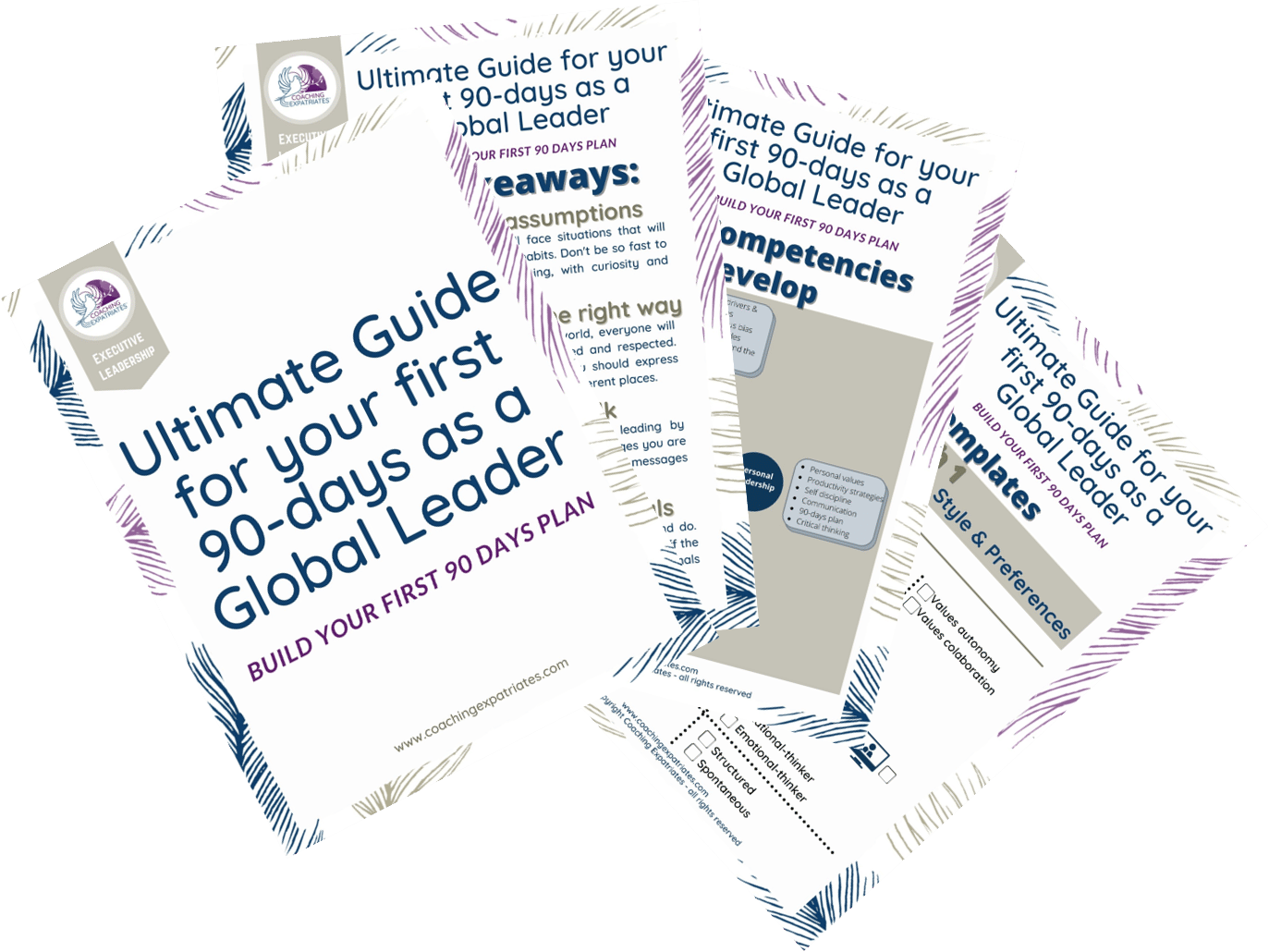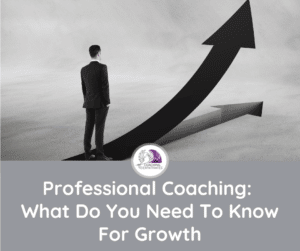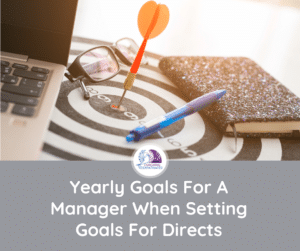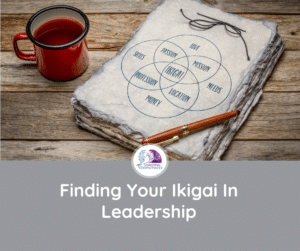Not showing up in authentic ways is a growing topic in our communities and in global corporations. During COVID-19, this topic emerged even more, as people had to navigate virtual environments to show their authentic selves in a moment where work and home blended so much. The main reason people adjust the way they show up, instead of being their true selves, is because they fear discrimination, judgment, bullying, and rejection. No, I’m not talking about teens here. I am talking about full grown-ups working in international corporations.
The Journey Of Becoming Authentic
Recently, someone in my network mentioned in a post that they wanted to give space to their persona at work. I don’t like to make assumptions because I know how assumptions can be dangerous, so I asked them, in private, what they meant. And they meant they wanted to show up more authentically at work.
I’ve been dragging my feet to write this story, and one of the reasons could be exactly because I am afraid to fully show my authentic self and be vulnerable about it.
I worked in corporate financial environments for years, always with growing responsibilities and demands. And for years, I thought that the only way to be taken seriously as a woman in that environment was if I behaved like men. Dress like men, talk like men, be tough like men, not show emotions like many men, and so on.
One day, my employer at the time, hired a consulting group to provide one of those assessments to their top talents. The assessment would show personality traits and how they showed up at work and at home. Once I received my debrief, I gasped at the gaps in most of the traits. When I talked to the debriefer, they said, “lady, with this much gap, I don’t know how you are surviving. Looks like you boxed your personality and threw out the key when coming to work.”
“What the nerve,” I thought back then. “I’m perfectly fine.”
But the truth was that I was not. When you box your personality and throw out the key, I’ll tell you: it’s pretty suffocating.
One day, I met this lady, who was a powerful CFO and hired me for a Controller position. At work, she would wear pink lipstick, use ponytails to dress her hair, make use of colorful wardrobe pieces, and get emotional when she felt like it, amongst other things that confounded me; she being a powerful and successful CFO.
Sure, she was judged. I heard many people making very cruel remarks about her behind her back. But boy, she was cool. In international finance conferences, where only a few women were present, she would make her entrance with her ponytail, and people would whisper their cruel remarks, but when she opened her mouth…. She would always give a show. I’ve never heard any hateful comments after she gave her presentations. They would look silly, after all.
She was smart, quick-witted, always prepared, perceptive, and… compassionate.
The reason why I am telling you about her is that she changed my perspective entirely about authenticity. Truly, I believed until then that it was perfectly normal to have one personality at work and one at home since one of them was “being professional.”
She showed me that we could be professional at the same time that we show our own personalities. Many years later, I wish I had saved the card from that guy who debriefed me on my report. I would so much love to talk to him and fully gain his perspective about those results. Maybe it would help me help other people.
Authentic Actions & Reactions
It’s true that people will judge your real personality, especially if it’s not what they expect of you in your capacity. But this speaks more about who they are than who you are. Who you are should not change based on your environment and what you do. We can all be excellent and successful professionals, being our authentic selves at the same time.
It’s not easy, though, to be ourselves. It requires courage and a lot of determination.
After I realized that I could still be a kick-ass professional, being my true self, I committed to change. What’s more, I am still in this process of change to this day. I met this awesome lady back in 2007, so do the math! After this long, I’m still learning to be myself fully in the professional environment.
So don’t feel discouraged if you are troubled by that. There is no shame, so long as you are trying with the best of your abilities to show up as your true self and have a success mindset. And if you feel you need a little hand, you can get some extra support and encouragement from a professional coach that will help you in the matter.
Becoming More Authentic In A Step-By-Step Process
Here are some tips I have for those professionals on this kind of journey:
1. Take An Assessment:
The reason why schools have tests is to know where the student is at. An assessment is not a test, but it helps you understand where you are at, in a more validated way. You can make your own assessment, but thousands of good assessments in the market can provide you with awesome insight into yourself. I’d suggest, though, that you take an attitudinal assessment instead of a Personality assessment. When you are at work, it’s not your personality that changes. It’s your attitude. I recommend taking the Energy Leadership Index Assessment, which is exactly that. It shows you how you show up when you are in a cool place, like home, or in a stress mode, like work.
2. Start Small:
Don’t think any of us can make great changes overnight. Start small by finding one peer at work that you can fully open up to and help you in this journey. Tell them you want to show up more as yourself at work, and ask them to observe and tip you off when things are not going right from that perspective. Listen, you must be open to being “scolded” sometimes by this person. It defeats the purpose if they don’t point out the things you should know. Once, a peer of mine told me, “Taty, you act completely differently in person and by email; what the heck?” So be open to this kind of feedback so you can know which aspects of yourself need more attention.
3. Create Your Infographic:
Having something visual to aid you can be powerful. This is what I recommend: create 2 columns on a paper or a digital note taker. On one side, list the main traits that show up at work, and on the other side, the main traits that show up when you are around loving people. Identify which traits you want to start working on first. Nothing will change if you try to change the world at once. Select one of the lines and start working on it. For example, if you want to provide your opinion more often at work, use that to start. For 21 weeks, focus on sharing your opinion whenever you can. Ask trustworthy people for constructive feedback on how you are doing on this topic.
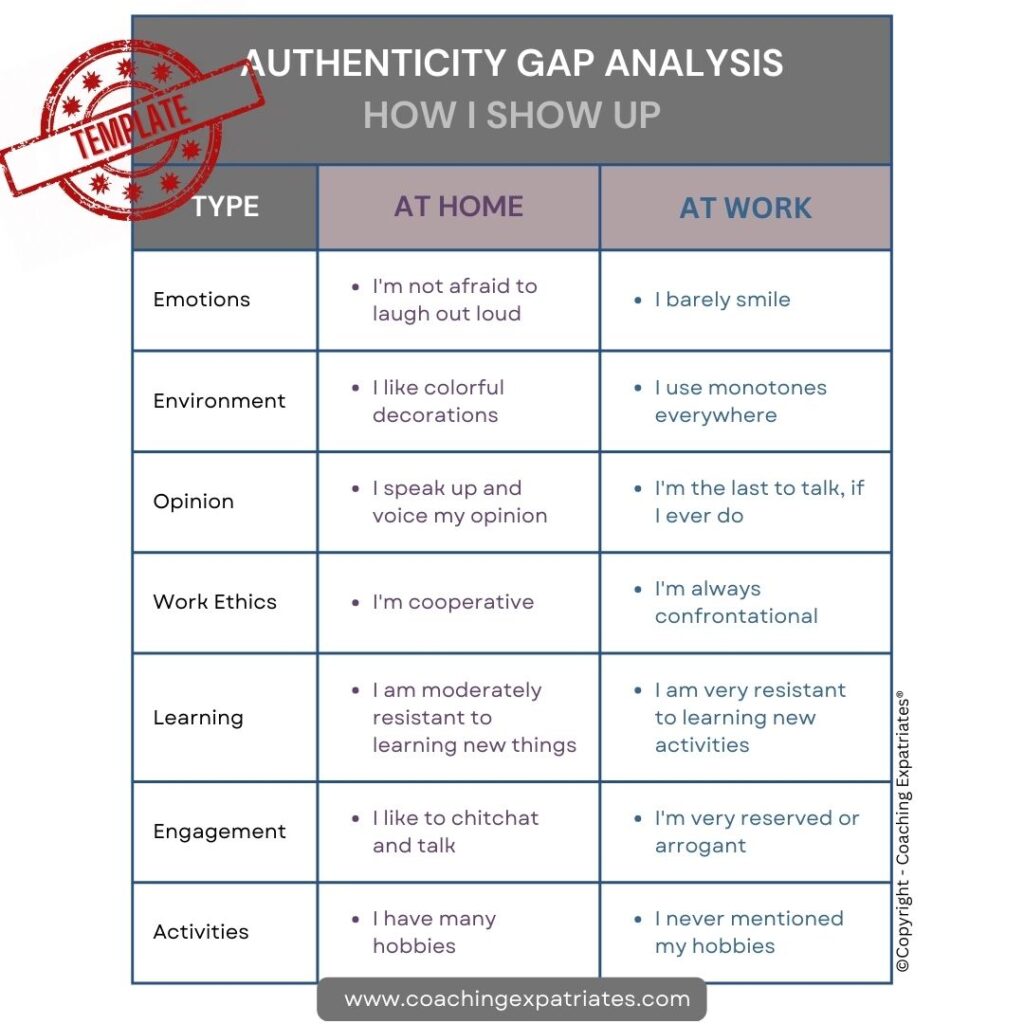
4. Find Professional Help:
Sometimes it’s super hard to tackle certain topics. For example, I don’t like being confrontational, but certain tasks in my work at the time required me to make objections that could lead to confrontations. Confronting is not the same as being confrontational, though. You can confront or face a situation showing up in a non-confrontational way. This was too much of a jump for me back then, and I had to hire professional help to tackle this topic. While on your journey to be more authentic, hire the right people to help you in the endeavor. Hiring an executive coach is a sign of strength and commitment to your change.
5. Commit To Change:
Talking about commitment, here it is. Without formal commitments, we don’t follow through things, studies show. That’s why telling people you will do something make you feel compelled to keep your work and your word. Humans hate to lose face. So if you noticed a pattern of not following through on your commitments, take on the challenge by committing to your change in public. The person I mentioned at the beginning of this article made so by publicly putting his commitment on a LinkedIn post. Kudos to them!
You don’t have to be so bold, though, if that’s not your authentic self. But having at least one accountability partner to whom you are formally committed to is important.
6. Stop And Reassess:
I always preach to my students and coachees about the power of metrics. And that’s because we will walk blindly without data to show us if we are on the right track. So to speak. This means that once you got your plan, you have identified what you want to change and which topic you’ll start with, you even got help and are formally committed to it, then it’s time to set metrics and reassessment dates.
In my example of providing opinions, one metric could be how many opinions you provided that week. A qualitative metric could be the feedback people provided to you that week. Remember to seek feedback. Keep track of all this in a physical place (not your head!) and see how you are doing.
For example, you can set a goal of providing opinion on 10 occasions per week. And you can set the dates for your reassessment. On a selected day, you evaluate your progress, how far you are from reaching the goal, and how you feel about it.
7. Celebrate Small & Big Victories:
People often forget completely about this, but we should celebrate small and big victories. Include in your plan how you will celebrate once you reach the goal for that topic. Maybe you’ll invite all your co-workers for a happy hour and continue being yourself there. Or something entirely else like a SPA Day. How you celebrate does not matter so long as you do something to formally recognize your effort and your courage.
Final Remarks
I hope this post inspires you to show up as your true self anywhere you are, and get motivated to do so, if that’s something you’d like to see more in you. If you need to, you can hire me as your professional executive coach you can have a free strategy session with me to see if we click.
Listen, the best gift we give ourselves is to live in the present moment and learn from our experiences. And that cannot really happen if we are shadowing or opposing our authentic selves. It’s much easier to notice the little miracles of life and create trust bonds with other awesome professionals when we are fully ourselves.
If you liked this article, subscribe to my newsletter. I send weekly bite-sized insights to leaders who want to lead internationally and create happy and profitable corporate environments.


